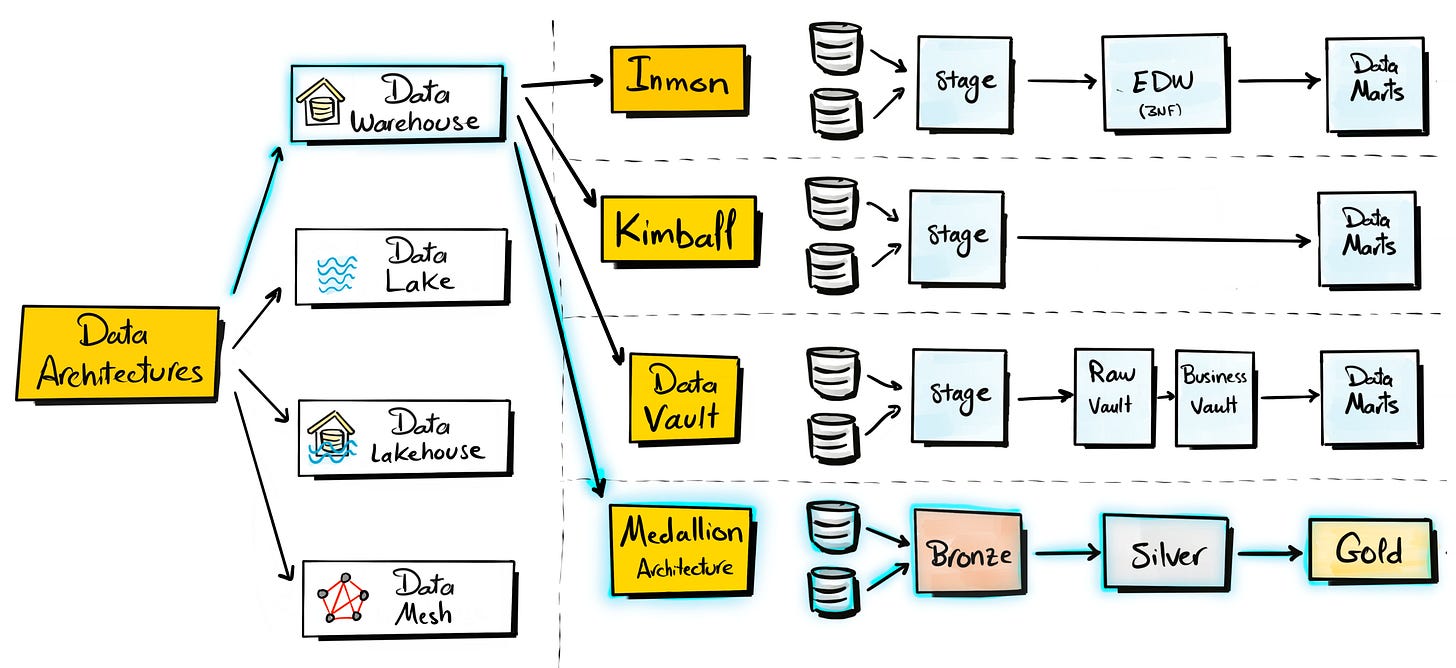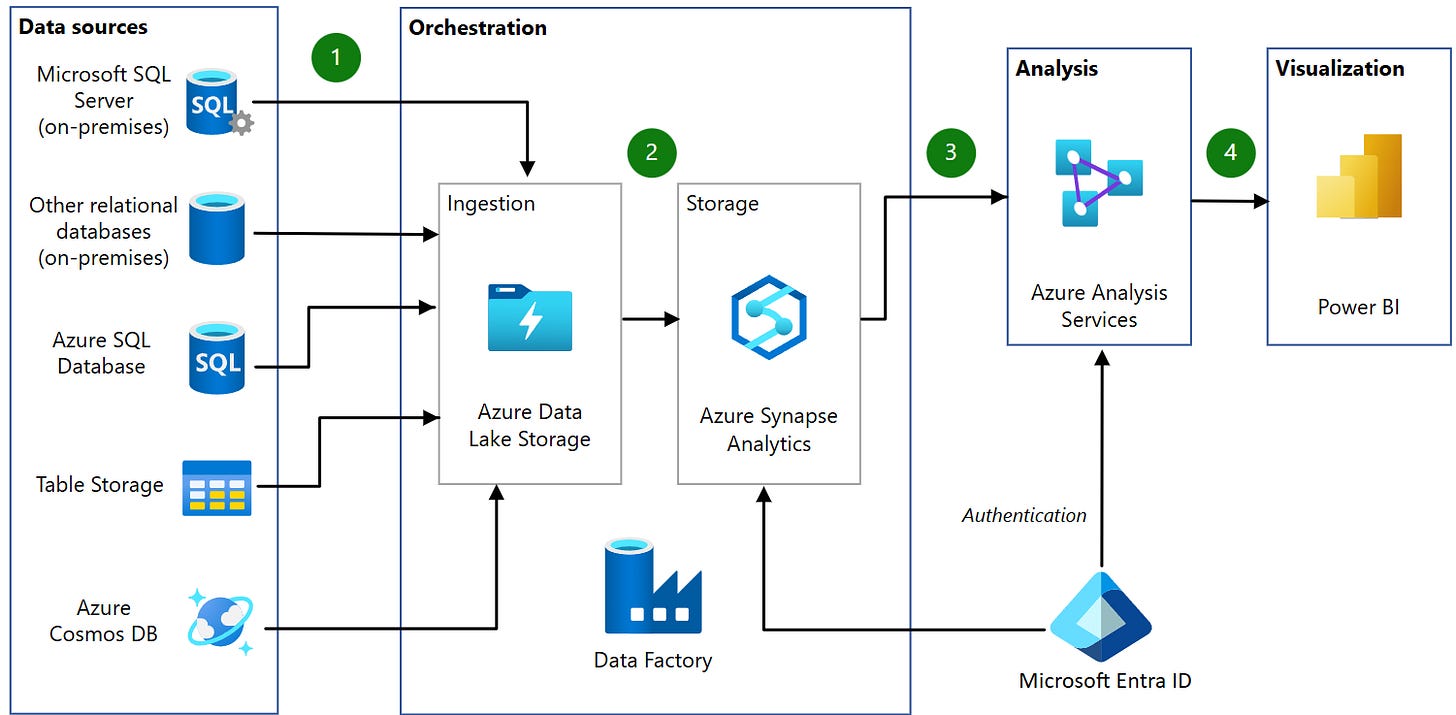Data Architect Roadmap
Part 2 of the Data Architect Series: A complete guide to the principles, mindset, and core skills behind modern data architecture
Architecture isn’t about perfection. It’s about design, clarity, and intention.
Over the years, I’ve learned that good data architecture has less to do with technology and more to do with thinking.
Here’s a breakdown of the core skills every data architect must master :
1. Understand the Core Data Architectural Designs
There isn’t one single “data architecture.” Different designs solve different types of problems.
Key patterns to designs that you to learn:
OLTP vs OLAP
Data Warehouse → structured, clean data for analytics and BI.
Data Mart → smaller warehouse focused on one department or topic.
Data Lake → stores all data types (raw, semi-structured, structured).
Data Lakehouse → combines lake flexibility with warehouse reliability.
Lambda Architecture → combines batch and real-time processing.
Kappa Architecture → simplified real-time (stream-only) design.
Data Mesh → decentralizes data ownership by business domain.
Data Fabric → unifies data access across clouds and systems.
Data Product Architecture → treats each dataset as a reusable product.
Streaming Architecture → handles continuous, real-time data (Kafka, Flink).
API-Driven Architecture → exposes data through APIs for other systems.
Serverless Architecture → runs scalable data workloads on demand.
Data Virtualization → queries data across sources without moving it.
You do not need to build all of them.
You only need to understand their purpose and trade-offs.
2. You “Design” Architectures
Architects draw. A lot. That’s how ideas turn into systems.
Your job is to listen, ask questions, and sketch how data should flow.
You start from the user’s need, trace it back to the data source, and build the bridge in between.
What every architecture should include
Scalable and ready for future growth
Supports multiple use cases such as analytics, AI, and machine learning
Cost efficient and maintainable
Meets real business needs
One of the most common tools used by data architects today is Draw.io.
It’s free, simple, and powerful enough for professional architecture design.
Study open reference architectures from Databricks ,Snowflake, or Azure Synapse.
See how they structure ingestion, storage, and presentation layers.
3. You Can’t Architect What You’ve Never Built
Keep reading with a 7-day free trial
Subscribe to Data with Baraa to keep reading this post and get 7 days of free access to the full post archives.



